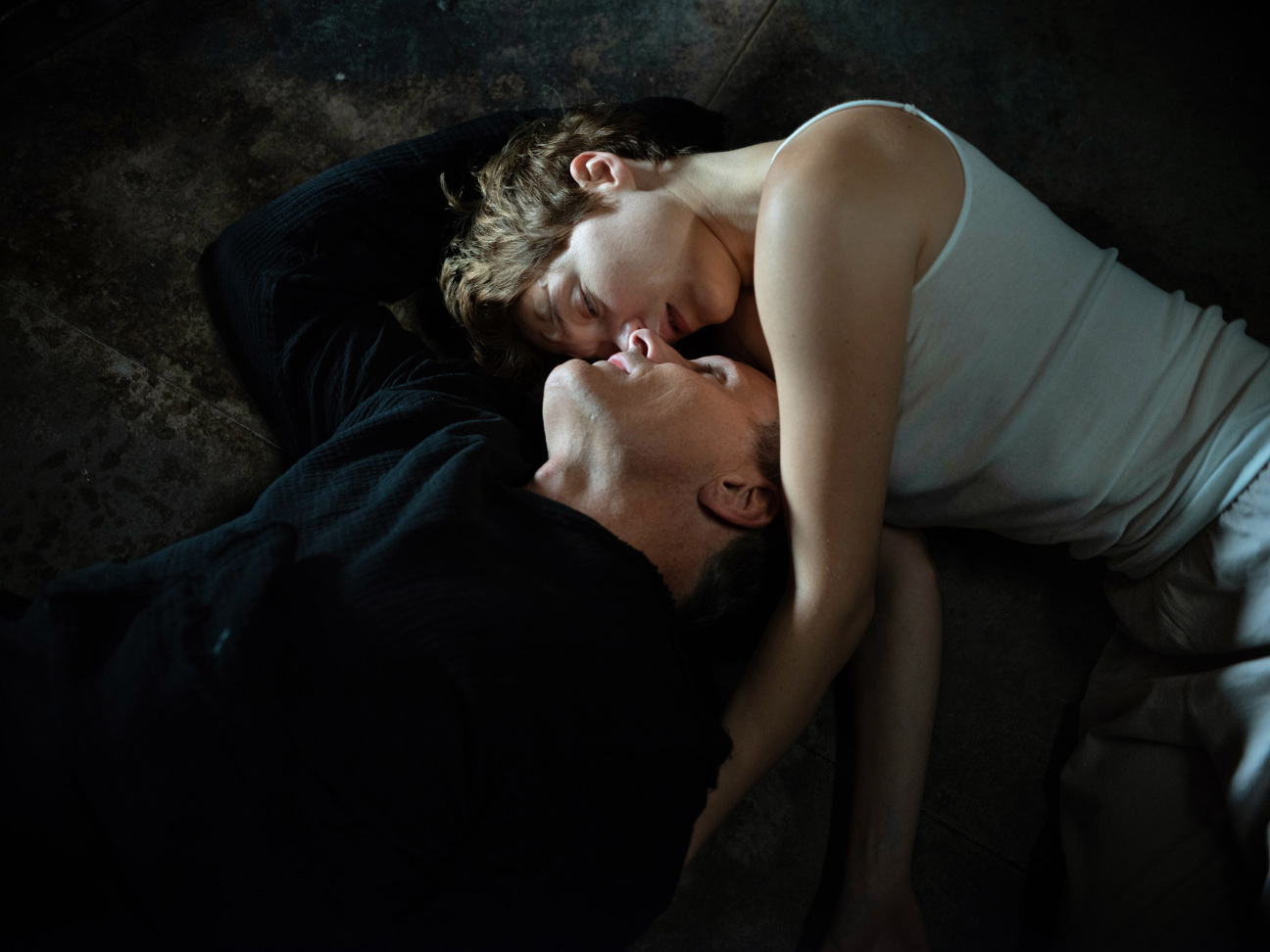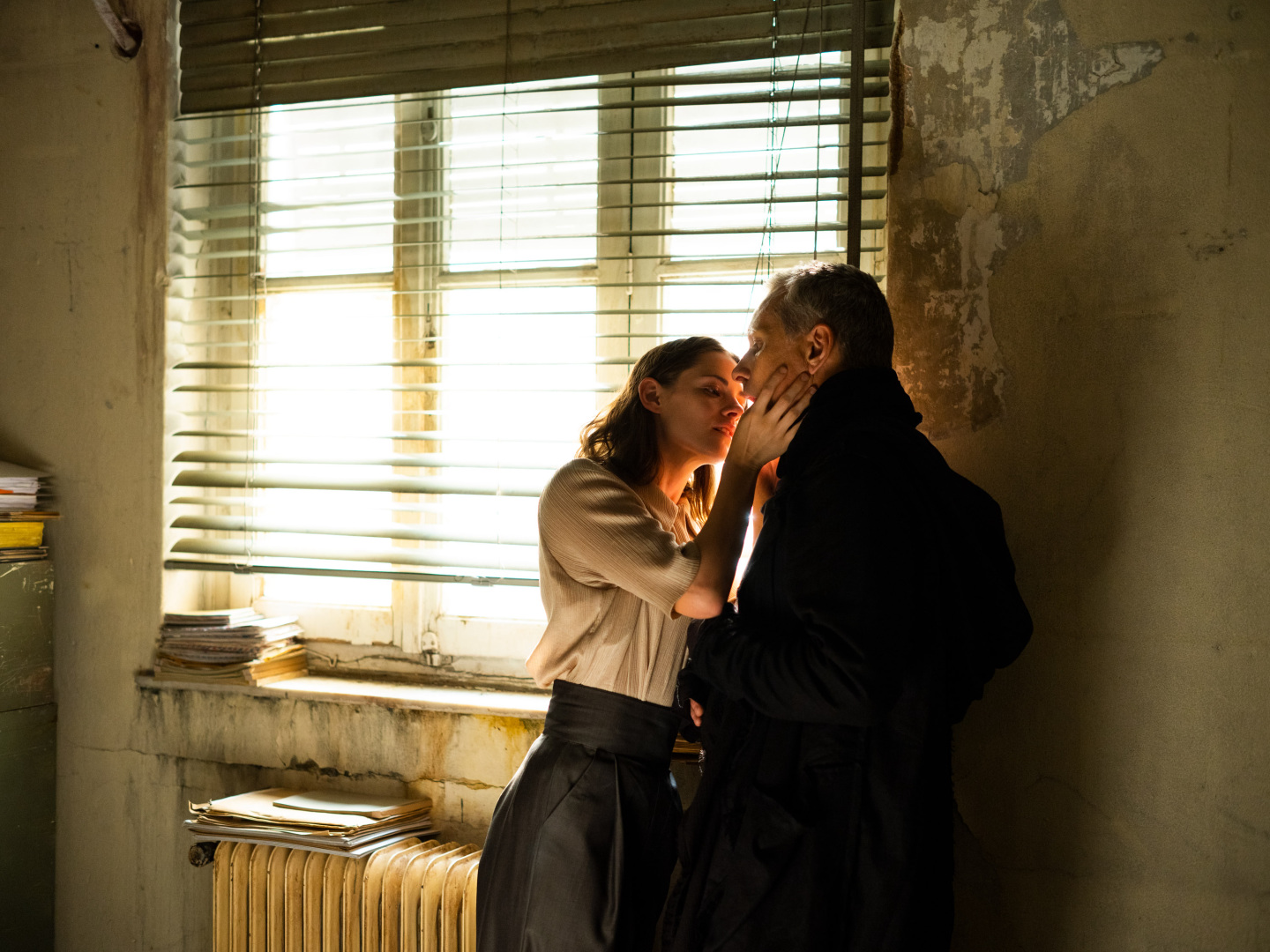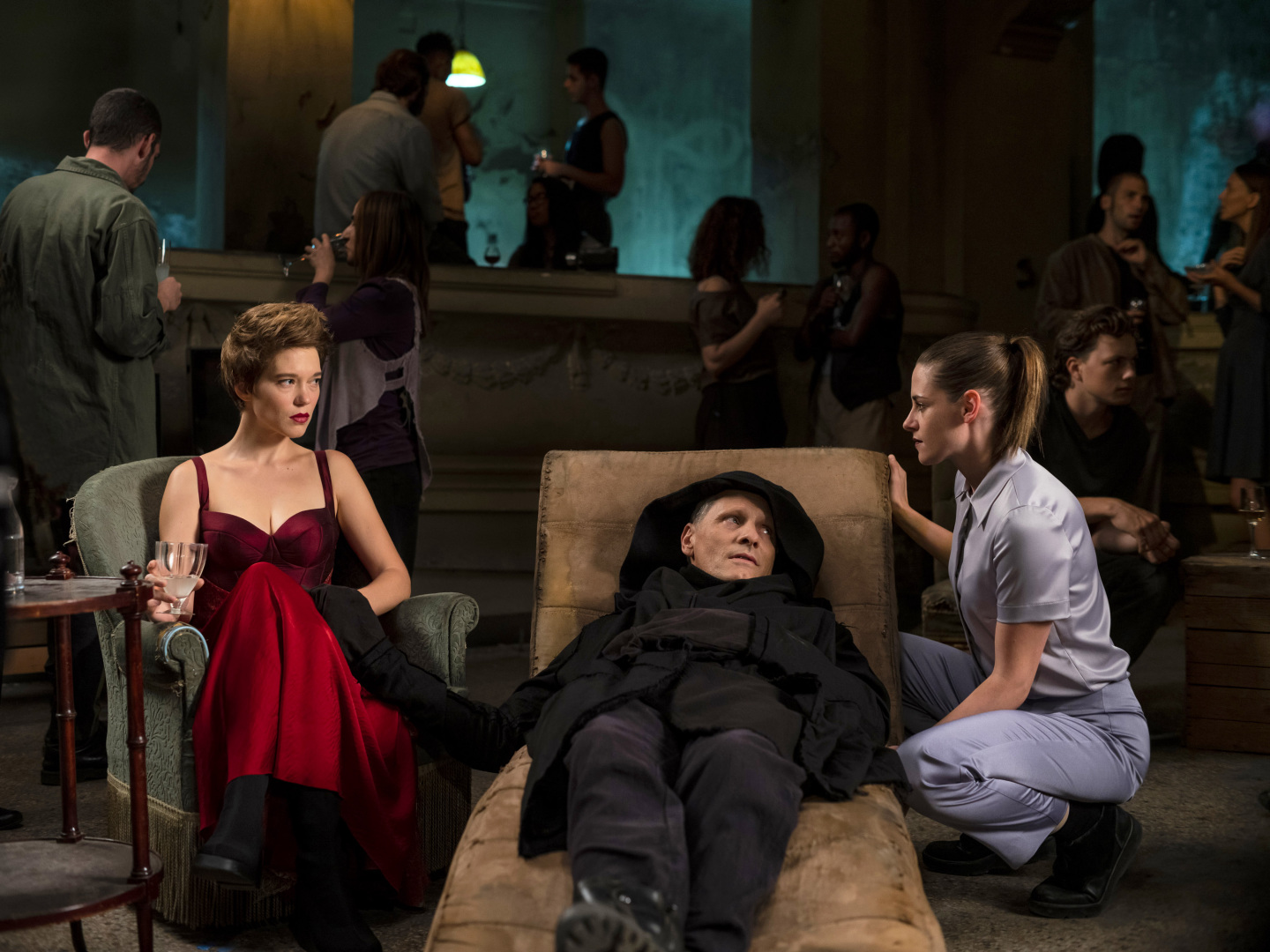One central metaphor of Crimes of the Future, director David Cronenberg’s first feature in over a decade and his first film in even longer to delve back into body horror—and delve it does, deep into the nestled viscera of an open chest cavity—is that surgery is the new sex. Humans no longer feel pain. Couples embrace tenderly in the street to kiss and stab each other in the leg. Performance artists proliferate, deriving meaning—and erotic pleasure—from surgical intervention.
It’s a neat metaphor, so tidy it almost feels camp. Penetration by a scalpel equals penetration by a phallus or sex toy. The wound opens into a metonymic womb. One character, a twitchy bureaucrat played by Kristen Stewart, even says it out loud, whispering, “Surgery is sex, isn’t it?” to Saul (Viggo Mortensen), a performance artist whose partner Caprice (Lea Seydoux) operates on him live in front of an audience. There’s a dark, winking humor at play in how bluntly the point is hammered home. By emphasizing the crudeness of the metaphorical gesture, the film sets up dramatic tension: if surgery is so obviously the new sex, what might it be less obviously? What, in this world of open wounds and mechanical probes, is kept hidden?

Saul and Caprice ply their performances in a decadent post-industrial dystopia where some humans have developed an unexplained tendency to generate new organs. He grows them, a painful condition called Accelerated Evolution Syndrome, and she—clad in a red evening gown as murmuring patrons sip drinks—takes them out. The organs are then tattooed and catalogued by the National Organ Registry, a minimally staffed government agency (that’s where Kristen Stewart, impeccably cast, comes in) housed in a few dingy rooms.
In its basic form, the film is a simple, effective Sci-Fi thriller: there’s a murder, a mystery, a detective, a secretive resistance cell and a nefarious government. The strokes are familiar, but the approach is too languid, too weird, too searching, to ever be predictable, and a few scenes—the opening sequence in particular—are horrific enough to imbue the rest of the film with a real moral urgency. Crimes of the Future also works as a sharp art world satire. At one point Saul attends a performance by another artist, a dancer who has his eyelids and lips stitched shut and extra ears implanted all over his body, supposedly to better hear the music. To Saul’s disappointment, it turns out the extra ears don’t even work. Even a post-apocalyptic conceptual art scene has hacks.



That dark comic tone (there’s also a brief side plot involving a literal “inner beauty contest”) is one of the many directorial choices that make the film so compelling. Cronenberg’s images are characteristically brutal—there are many, many close-ups of organs being removed, and some wincing scenes of violence—but his approach mixes a frank objectivity with a transgressive sensuality. The scalpel caresses as much as it cuts. Somehow, aided by Howard Shore’s terse, atmospheric score, even the most graphic scenes transcend mere shock factor and become impossible to look away from. Few directors pull deep-rooted fears and desires to the surface as well as Cronenberg, and Crimes of the Future is a simmering, seductive return to some of his most provocative preoccupations.






 in your life?
in your life?

